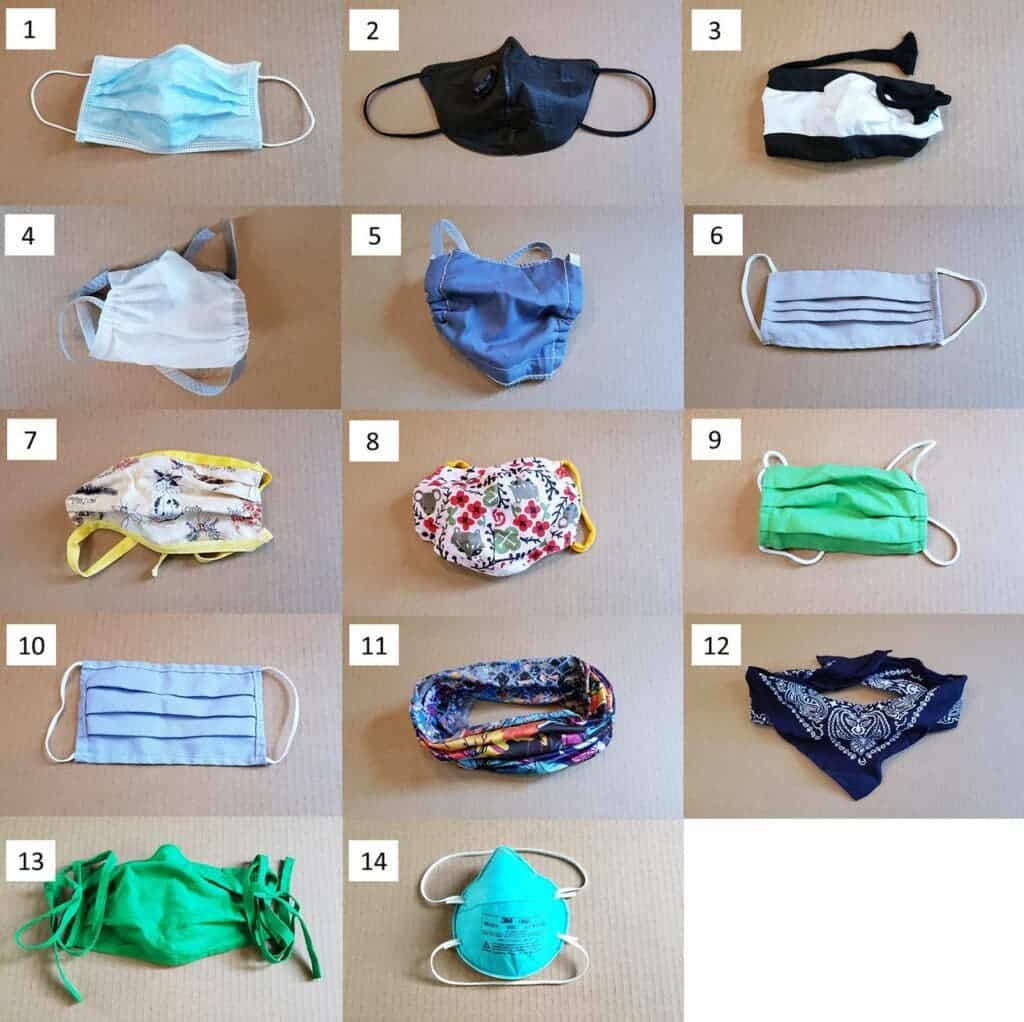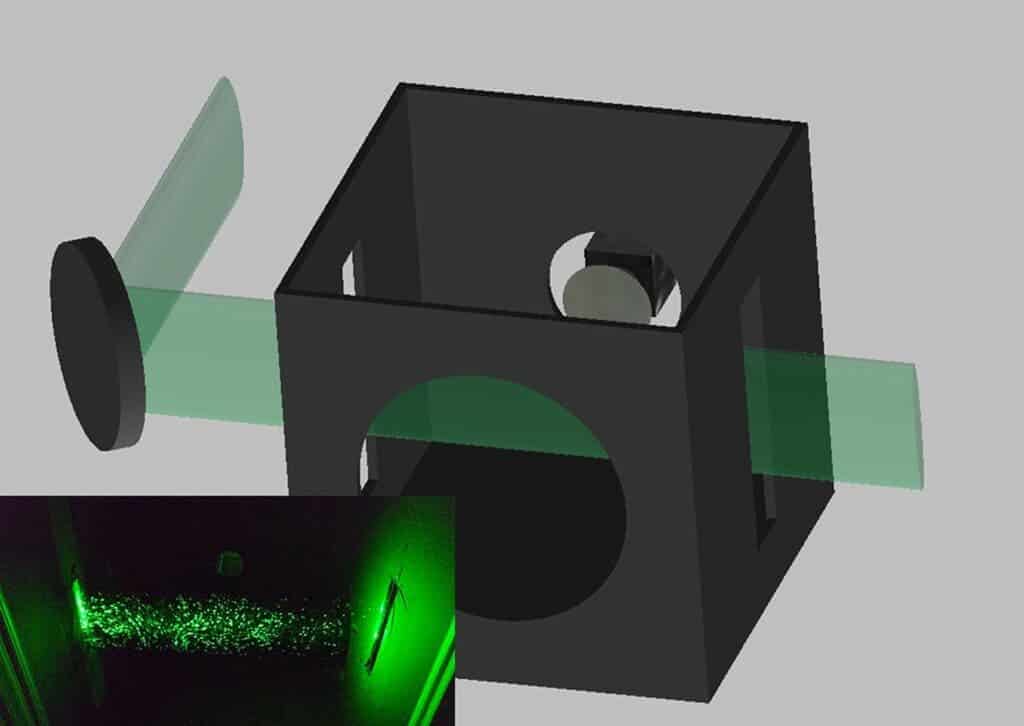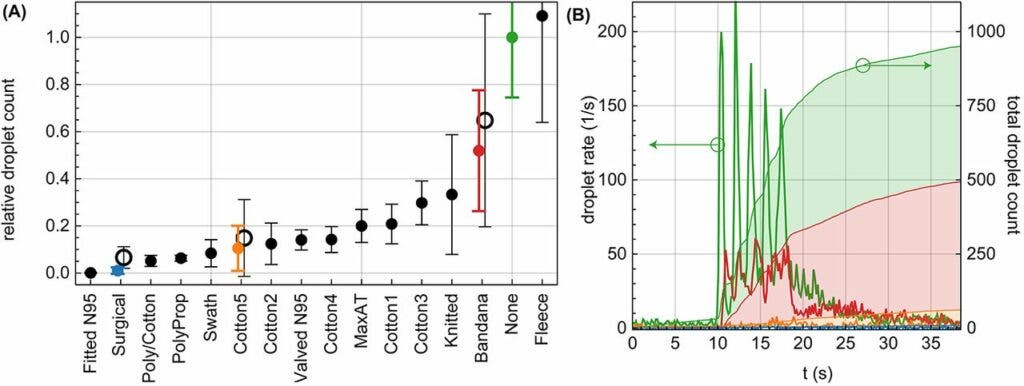After an initial fumbling, the world has largely understood that face masks are a key ally in our fight against the novel coronavirus. But as the reality of wearing a mask day in and day out sinks in, practical problems also start to emerge. Buying single-use masks can be costly and cumbersome, but are cloth masks as efficient? Speaking of, which types of masks are more efficient?
While there’s still a lot to be understood, scientists are closing in on the answers.

Testing face masks
Masks have two main purposes: the most common application is to protect the wearer from pathogens, but in the case of surgical masks, the main goal is to protect from the wearer. In the case of the novel coronavirus, there’s a little bit of both. While masks offer some protection to the wearer, they are most useful in filtering droplets coming from the wearer. But given the recent explosion in the types of face masks being used, there’s also a lot of confusion.
So a group of researchers from Duke university devised a simple method to assess which masks are most and least effective in terms of droplet filtering.
They used a straightforward setup that involves a black box, a laser, and a cell phone. An operator wears a face mask and speaks inside the dark box, into the direction of the laser beam. Droplets that propagate through laser scatter light, which is recorded with a cell phone camera. A simple algorithm is then used to count the droplets in the video — a setup that can be recreated for less than $200 by non experts.

With this simple but effective setup, researchers analyzed 14 commonly available face masks, ranging from the professional N95 respirator masks to surgical, cotton, and different types of cloth masks.
The camera was used to record a video of approximately 40 s length to record droplets emitted while speaking. The researchers first measured how many droplets are produced by speaking before and after wearing each mask. Each test was repeated 10 times.
N95, surgical, and multi-layer cotton masks perform well
The best-performing mask was the fitted N95, which filtered 99.9% of the emerging droplets. Three-layer surgical masks were the runner-up.
Then, researchers note, a number of masks made from cotton and other reusable materials performed very well, filtering over 80% of the resulting droplets. As previous research also suggested, the high-thread multi-layer cotton masks (3-5 layers) many people have been using can indeed serve as effective filtering barriers against droplets. However, not all materials performed well.

Wearing a gaiter mask actually produced more droplets
Researchers were very surprised to see that fleece actually produced more droplets than wearing no mask at all, as the material dispersed the largest droplets into a multitude of smaller droplets. Bandanas also offered a modicum of protection that varied greatly between different measurements (the longer the bars above are, the more variation there was between individual measurements).
Considering that smaller particles are airborne longer than large droplets (larger droplets sink faster), the use of such a mask might be counterproductive, the researchers note.
Another interesting takeaway is the performance of the valved N95 mask — which features an exhalation valve. This valve doesn’t affect the protection of the wearer, but because the valve produces a strong outwards airflow, it can decrease the protection of people around the wearer.
Replicating the setup for other masks
The researchers note that their primary objective was to create a demonstration of how to easily measure face mask droplet filtering efficiency.
The setup can be reproduced by companies or even individuals producing and selling face masks to test their efficacy, especially as it features easily available materials and technology. The researchers hope that their study will also raise awareness about how useful masks can be.
The fact that many cotton face masks behaved so well is encouraging, showing that even such a mask can offer substantial protection, both for the wearer and for those around the wearer. However, the study also highlights that not all materials perform well, and the flimsiest of materials may actually end up doing more harm than good. This could be an important consideration for policymakers mandating the use of face masks
Limitations of the study
However, there are significant limitations to the study. For starters, we don’t know exactly how the coronavirus is spread through droplets, and the number of droplets is just one part of the equation — it’s not fully understood how the size of the droplets also affects transmission.
Secondly, the cell phone camera might not detect the very smallest of the droplets, which again may or may not affect the risk of transmission. Also, the physiology of different speakers is different and may affect the overall filtration rate.
There are other methods to test face masks as well, and the authors note that their examples serve mainly as a demonstration. The researchers are hoping companies, museums, and community outreach centers can set up the test to show people which masks are the most effective.
“We should point out that our experiments differ in several ways from the traditional methods for mask validation, such as filtration efficiency of latex particles. As is apparent from the neck fleece study, liquid filtration (and subsequent particle size reduction) are more relevant than solid filtration. In addition, our method could inform attempts to improve training on proper mask use and help validate approaches to make existing masks reusable,” the study reads.
Which face masks are the best against the coronavirus
So where does this leave us regarding the coronavirus pandemic? As we’ve known for a while, N95 and other equivalent respirator masks are the best option when it comes to filtration, but they’re not always available to the general public and can be quite expensive.
Surgical masks are a second-best option, but only if they are proper three-layer masks. Perhaps the most important takeaway from recent studies is that when designed and worn properly, masks made of cotton can be comparable in efficiency to surgical masks.
This gives the general public a cheap, reusable, and accessible option for face masks. Study after study has shown that masks can be a simple and very effective protective tool against the coronavirus. We’d be wise to use it.


